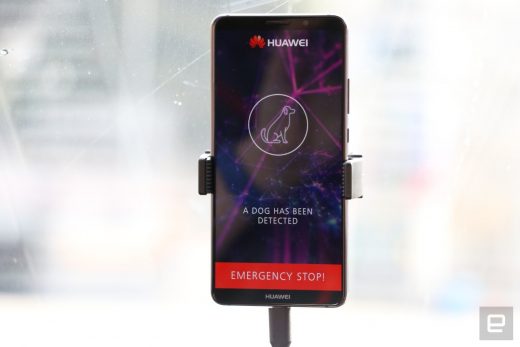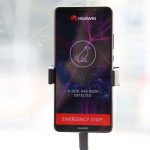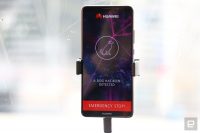Huawei made a Porsche slightly autonomous with a smartphone
With no flagship phone to show off to the assembled mass of journalists, bloggers and tech execs, Huawei took a different tack this year at MWC. If it wasn’t slick laptops with pop-up webcams, then it’s this: The “RoadReader.” To showcase the company’s AI push (read: remind everyone it’s really into this neural processing gig), the Huawei used its Mate 10 Pro smartphone as a lightweight autonomous car brain, inside a Porsche, right outside FC Barcelona’s stadium. I was one of the lucky few to experience what it’s like to be driven around by an Android phone.
Let’s not get ahead of ourselves: This isn’t Huawei eyeing a move into the crowded, messy world of self-driving cars. It’s a fluffy showcase of the company’s AI ambitions. As one spokesperson put it, if a phone can “drive” a car, it must be a pretty good phone. And at a time when Huawei needs to maintain a presence on par with the Samsungs of the world, anything that can help make the company even slightly more memorable is a good thing.
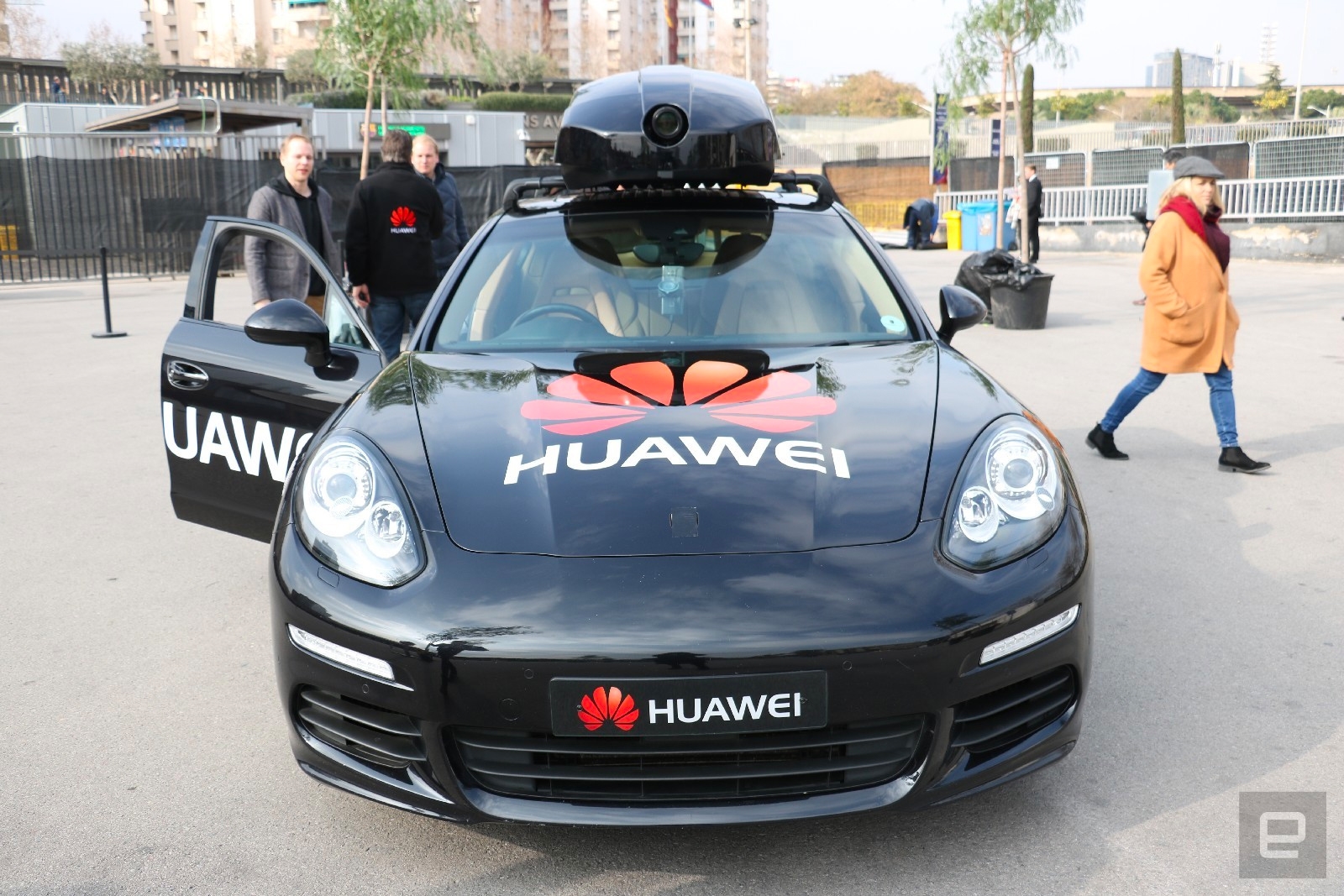
Those quote-marks on “drive” are necessary, by the way. The demo involved a short straight track with one of several hazard props (pop-up dog, man with bike, inexplicable giant soccer ball) that the phone picked up on its sensors, logged it, and then proceeded to avoid the obstacle during a second. The Mate 10 Pro was rigged up to control the car — actuators and levers ensured it veered or braked when needed, but we’re not getting into the heady territory of Level 3 autonomy. But given that the team managed to craft this kind of setup in five weeks, I’m not going to rake them over the coals for not crafting the best self-driving car demo ever.
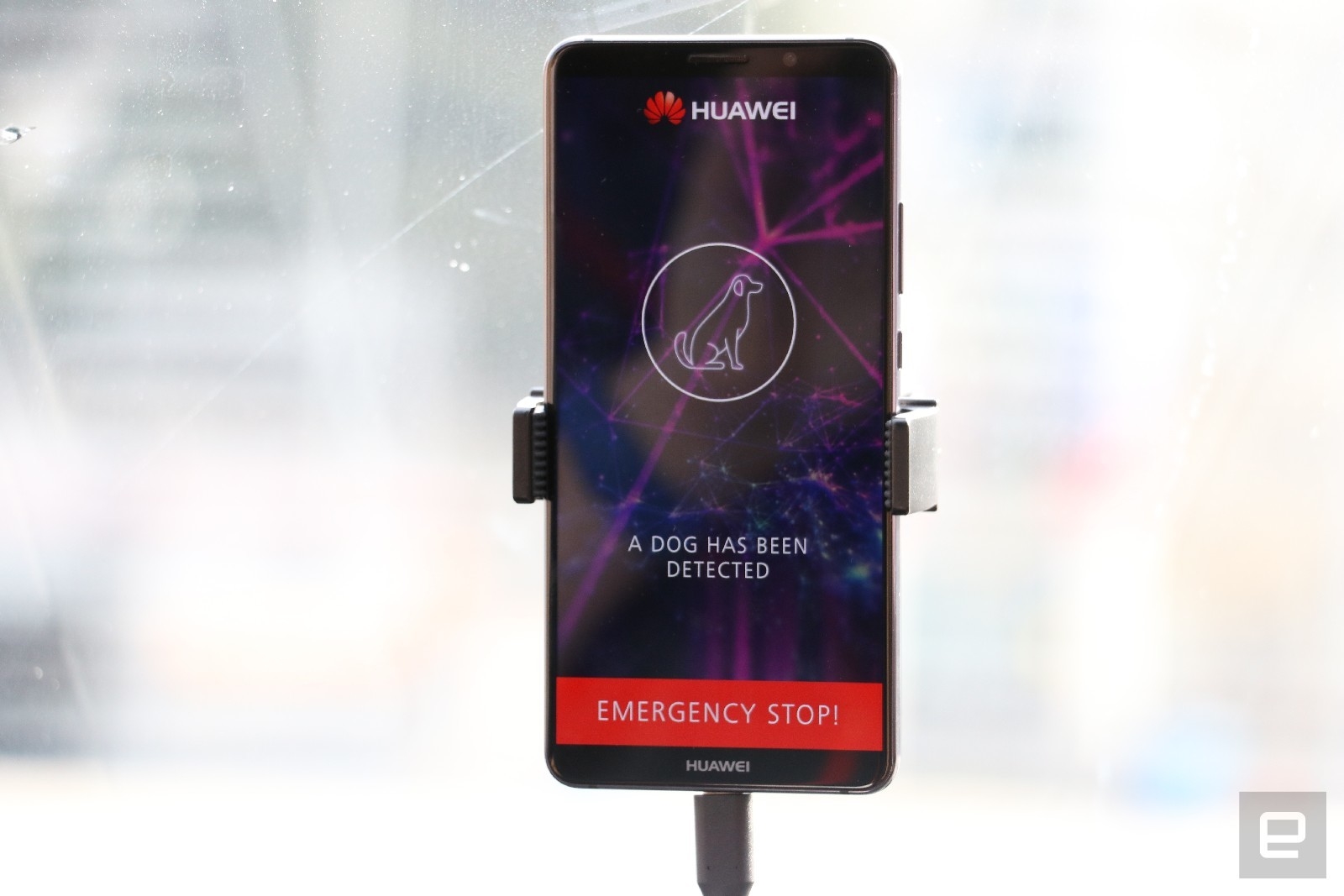
The brain, then, is Huawei’s Kirin 970 chip, which is capable of processing up to 2,000 images per minute. As was teased at its announcement last year it can tap into AI programs like Google’s TensorFlow, which is exactly what’s being used here.
During the learning phase, the car runs at a very slow clip, scanning and picking up the staged obstacles I mentioned earlier. The Porsche then gets manually reversed to the starting line, and the cool part begins. Next, it’s time for a quick app intermission. The same phone that initiated the “phase one” drive with a single tap now asks me to program it to avoid those three hazards. I can swerve to the left, right or simply brake. I program my choices in, shift the gear stick to drive and we’re off.
On the second run, the car now accelerates at a fair clip, and I remember that a mere phone is in charge of what happens. It’s a little unnerving, even when the road is all-but clear and I have a trusty giant red emergency button to hand above the central console between the chairs.
The car identifies the dog moments after we start accelerating, and as programmed, swerves to the right to avoid. It’s all over in ten seconds or so.
You might notice that the setup here at MWC is a little more obvious than Huawei’s own glossy demo, embedded above. In real life, there’s a conspicuous roof rack attached to the top of a car. I thought we wouldn’t get to see what was inside the mystery box, but my skepticism was ameliorated by getting to take a look inside, where there was only a single high-end camera, telephoto lens, and a rig to ensure it stayed in place. The camera was serving as the “eyes” of the car. It kinda ruins the illusion of a car driven by a smartphone AI, doesn’t it?
(34)

